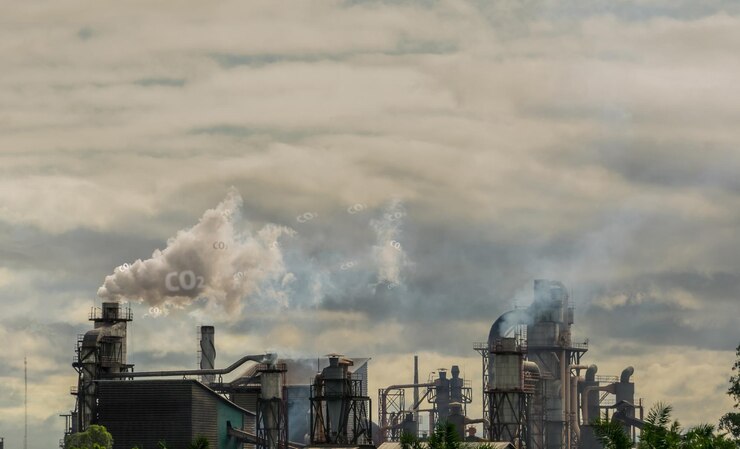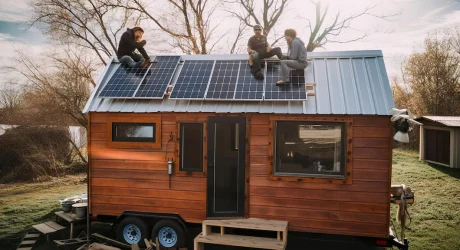What do the transportation industry and electricity production have in common? Together, these two industries account for 50% of the world’s greenhouse gas emissions.
C02 is filling the atmosphere at an alarming rate. As it does, it traps heat in the atmosphere, resulting in global warming.
And we are starting to see the true effects of global warming, as reefs are dying in the ocean, glaciers are disappearing, and less snow is gracing our mountains.
If we don’t put a high priority on carbon removal, the environment, and humankind, are going to suffer for it.
Luckily, carbon dioxide removal is possible. Keep reading below to learn how carbon capture works and how you can help get involved today.
The Problem With Carbon
So much of what we do releases carbon dioxide (CO2) into the atmosphere. Most of the energy we produce and use in the US and worldwide comes from fossil fuels like oil and coal.
We burn oil to power our cars, planes, and other vehicles. And we burn coal to generate electricity to power our homes and businesses.
All of this burning emits CO2. Smaller amounts of CO2 in the atmosphere are normal. As people and animals breathe, we release CO2 into the air.

Carbon moves through a cycle in which it moves from the atmosphere to the earth and sustains all life. And up until now, the carbon cycle has been balanced.
But with the number of fossil fuels burned in our modern society and the amount of land cleared for development, the amount of carbon in the atmosphere is more than the current carbon cycle can handle.
The system is out of balance, and the CO2 is creating a shield around the earth. It traps heat from the sun, raising the temperature of the planet. And this has drastic consequences.
Because lowering the number of fossil fuels used is a difficult and lengthy process, we must find other ways to remove carbon from the atmosphere.
Doing so can promote a balanced carbon cycle and sustain the planet’s fragile ecosystems.
What Is Carbon Removal?
Carbon removal, or carbon drawdown, is the proactive process of pulling carbon out of the atmosphere and locking it up in one way or another.
Carbon doesn’t disappear, but it can be placed in places where it won’t get out for a very long time.
This doesn’t solve the problem of climate change. Only a drastic reduction in the use of fossil fuels can reverse the curse of climate change.

But carbon removal helps to slow the effects of climate change or potentially neutralize them. Essentially, carbon removal can buy us more time and preserve the current state of the earth for longer, as nations and industries move toward more sustainable use of energy.
Some carbon removal methods aim to capture greenhouse gas emissions as they are produced, never letting them enter the atmosphere. Other methods exist to draw out carbon already present in the atmosphere.
All methods are important and need to increase if we want to build a sustainable future.
Carbon Removal Approaches
There are numerous ways we can capture or prevent carbon from entering the atmosphere. Here are some of the most important.
![]()
1. Reforestation and Preservation
The planet remained in balance from its birth up until the industrial revolution. It did so primarily through the activity of trees and plants.
Trees and plants improve air quality by pulling CO2 out of the atmosphere and converting it into oxygen and sugar, otherwise known as photosynthesis.
The more greenery we have on the planet, the more CO2 can be removed from the air.
The problem is that deforestation is a huge problem. Forests worldwide are being cut down and developed into towns, roads, and commercial institutions. At a moment in time when we need trees more than ever, we are cutting them down at an alarming rate.
Therefore, one of the best methods of carbon removal is reforestation. Planting trees and creating protected forests and green spaces is the natural method of carbon removal.
2. Factory Carbon Capture
Factories are responsible for producing the goods we rely on every single day. But they are also responsible for much of the CO2 emissions the earth is facing.
Carbon capture facilities will separate CO2 from emissions generated by a factory and store it so that it never enters the atmosphere.
3. Direct Air Capture
Direct air capture is a proactive method of removing existing carbon from the atmosphere.
These negative emission technologies rely on heavy machinery. But they actually require the least amount of land and water when it comes to carbon removal methods, making it one of the most effective solutions.
When carbon is pulled from the atmosphere, it can either be repurposed or stored and prevented from entering the atmosphere again.
Efficient machines pull carbon from the atmosphere while only emitting a small amount of carbon through their operation, ensuring a net positive approach.
4. Slowing Down Global Warming
Carbon removal is one-half of the solution when it comes to stopping and reversing climate change. The other half is eliminating greenhouse gas emissions altogether.
While many industries are making tremendous progress towards a lower carbon footprint, some are very difficult to decarbonize. There will always be certain industries or specific tasks (like making steel) that will emit carbon into the air.
This means carbon removal methods will always be important, even as global emissions come down over the next few decades.
Most of these carbon removal methods are very new. But with rapid globalization and industrialization, they will be vital to our society forever. With their help, we can slow and eventually neutralize our global emissions, reaching net zero when it comes to greenhouse gases.
At this point, global warming would cease to get any worse.
5. Carbon Removal Is Vital
Climate change is real, and it’s getting worse every day. Luckily, humans are waking up to the negative impacts of global warming and making changes to address this massive issue.
Carbon removal is one step we can take to preserve our earth and ensure things don’t get any worse. And who knows, maybe someday, the amount of carbon removed from the atmosphere will exceed the amount entering it.
Looking for more information like this? Check out our blog now to keep reading.
Additionals:




























